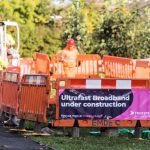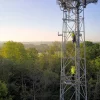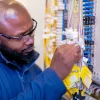AAISP Criticises Slow IPv6 Adoption and Expect to Disable IPv4 Before 2024
ISP Andrews & Arnold (AAISP) has today celebrated its tenth year of offering Internet Protocol v6 (IPv6) services to UK internet customers, which comes at a time when many of their rivals are still “dragging their heels” over adoption of the standard; that’s despite IPv4 addresses in Europe being perilously close to running out.
Any device that connects to the internet needs an Internet Protocol (IP) address to function properly, yet existing IPv4 addresses (e.g. 84.21.6.123) have been running out since the IANA allocated its last remaining address blocks to the worlds five Regional Internet Registry’s (RIR) in February 2011.
Advertisement
Europe’s regional registry, RIPE NCC, is widely expected to run out before the end of 2012, yet an AAISP spokesperson warned today that, “many large UK ISPs still do not offer their customers IPv6” (i.e. v4’s replacement). We covered this problem in more detail here (UK ISPs Respond to Readiness Fears on World IPv6 Launch Day).
An AAISP Spokesperson said:
“10 years ago IPv6 was leading edge, with very few companies offering any IPv6 services, and almost nobody offering it to consumers. At the time, only a few A&A customers took up IPv6 and it was very experimental.
Over the years it has become more and more mainstream. The FireBrick team incorporated full IPv6 PPP support as part of the equipment we deployed around 5 years ago – marking the end of our dedicated IPv6 gateway box and making IPv6 a standard feature. … All new customers are connected with IPv6 now, and A&A servers are available via IPv6.
In spite of the fact that the European regional registry (RIPE) is about to run out any day now, many large UK ISPs still do not offer their customers IPv6. Of those few ISPs offering IPv6, A&A are one of the only ones offering it as standard to all customers and shipping a configured IPv6 router as standard.”
AAISP somewhat boldly claims that ISPs which fail to deploy IPv6 cannot truly claim to offer full “internet access” because a miniscule portion of websites and services are already only available to IPv6 supporting connections.
In reality the prevalence of IPv4 means that ISPs and internet services alike will need to support the old addressing standard (dual-stack networks) for many years to come. The old standard cannot simply be switched off before the vast majority of internet users have been migrated onto IPv6 friendly connections and hardware.
AAISP envisages that IPv6-only networks will slowly become “more and more common” and as a result the ISP anticipates “finally turning off IPv4” before its next / 20th anniversary of IPv6 (2024) adoption. It will be interesting to see how that pans out.
Advertisement
Mark is a professional technology writer, IT consultant and computer engineer from Dorset (England), he also founded ISPreview in 1999 and enjoys analysing the latest telecoms and broadband developments. Find me on X (Twitter), Mastodon, Facebook, BlueSky, Threads.net and Linkedin.
« ISPreview UK Study Warns of Uphill Struggle for Bad Broadband ISPs
















































Comments are closed